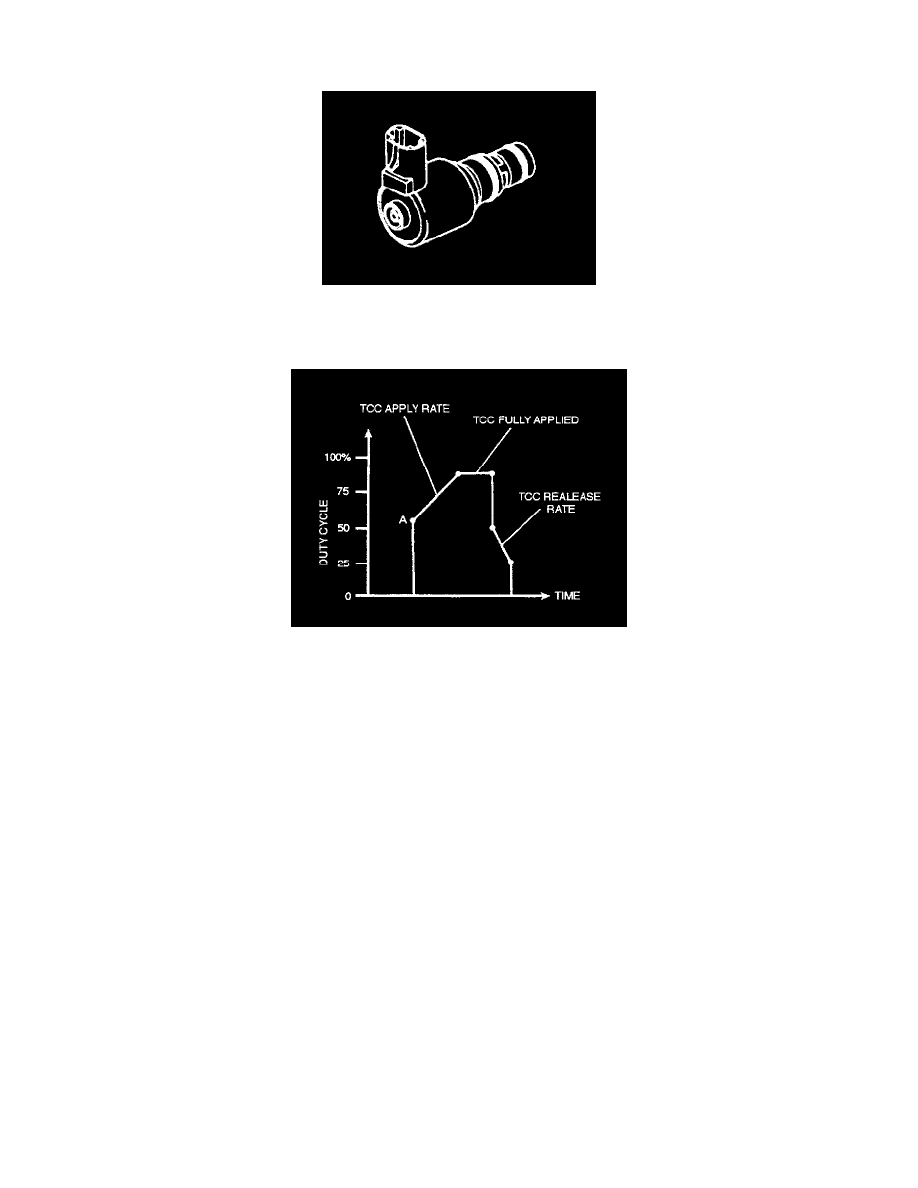Lanos S Hatchback L4-1.6L DOHC D-TEC MFI (1999)

Torque Converter Clutch Solenoid: Description and Operation
TORQUE CONVERTER CLUTCH SOLENOID VALVE (TCC SOL. VALVE)
The Torque Converter Clutch (TCC) solenoid valve is a normally closed, Pulse Width Modulated (PWM) solenoid used to control the apply and
release of the converter clutch. The Powertrain Control Module (PCM) operates the solenoid with a negative duty cycle at a fixed frequency of 42 Hz
to control the rate of TCC apply/release. The solenoid's ability to "ramp" the TCC apply and release pressures results in a smoother TCC operation.
When vehicle operating conditions are appropriate to apply the TCC the PCM immediately increases the duty cycle to approximately 68% (see point
A on graph). The PCM then ramps the duty cycle up to approximately 93% to achieve full TCC apply pressure. The rate at which the PCM increases
the duty cycle controls the TCC apply. Similarly, the PCM also ramps down the TCC solenoid duty cycle to control TCC release.
There are some operating conditions that prevent or enable TCC apply under various conditions (refer to the temperature sensor description). Also, if
the PCM receives a high voltage signal from the brake switch, signaling that the brake pedal is depressed, the PCM immediately releases the TCC.
Important: Duty cycles given are for example only. Actual duty cycles will vary depending on vehicle application and vehicle operating conditions.
TCC solenoid valve resistance should measure between 10.4 and 10.8 ohms when measured at 20°C (68°F). The resistance should measure
approximately 16 ohms at 150°C (300°F).
